One of the most difficult construction tasks for an architect to undertake is designing a house for themselves. In each issue of our newsletter we spotlight a successful international example of an architect who has taken on this particular challenge.
This Small House is helping to Save the Planet
Designed, built and owned by Solares Architects, this two-story family home located on a leafy street in Toronto’s west end is retrofitted to reduce energy consumption by up to 90%. The question is: Why aren’t we building more of them?
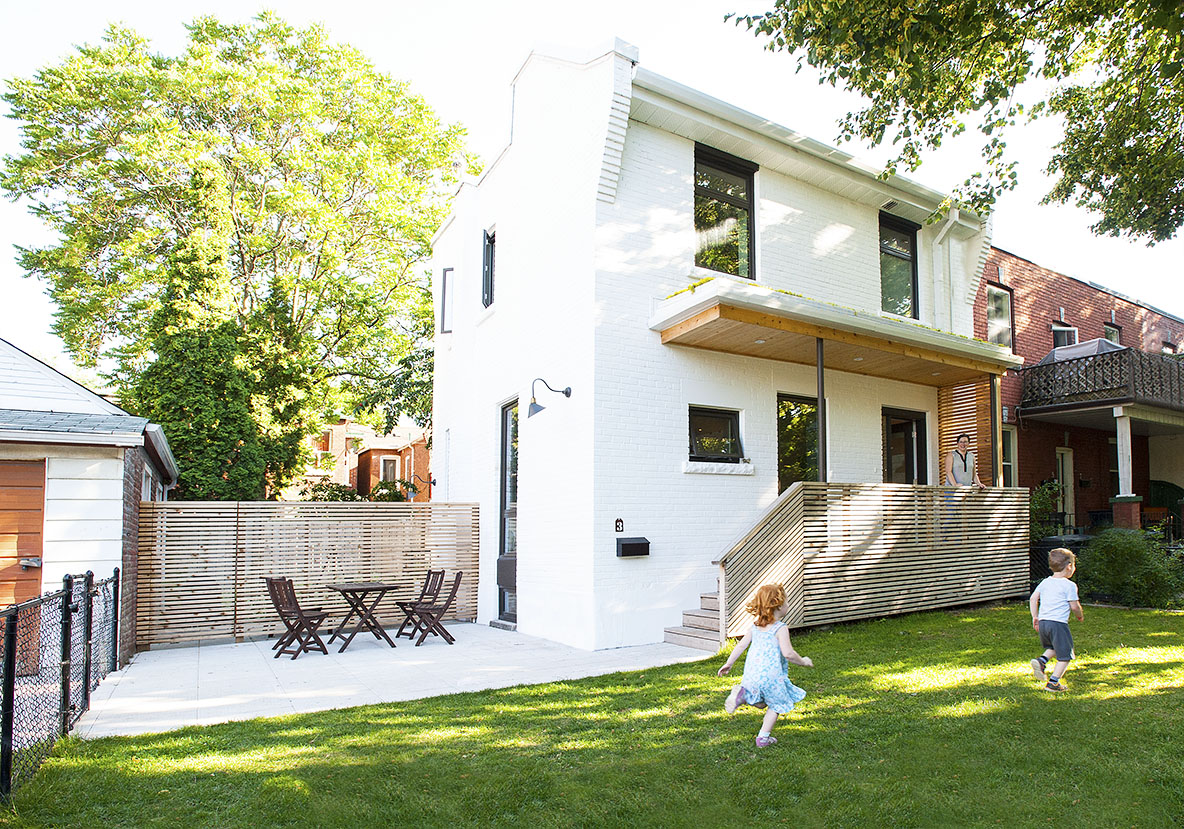
Our House, by Solares Architects, uses passive design features to significantly reduce its energy consumption. Photo: Derek Monson
Like many architects, Christine Lolley and Tom Knezic of the Toronto firm Solares decided to use their own house as a case study for potential clients. The aim was not to experiment with aesthetic forms and finishes as much as prove they could take an existing family home – which is notoriously drafty – and turn it into a super-charged, energy-efficient machine that practically runs itself.
The retrofit required gutting the 900-square-foot interior to its original studs and underpinning the main floor so the basement could be lowered to make room for a separate apartment suite. New interior walls and the upper-level ceiling were given thick layers of super-insulation; the floors were kitted out with a hydronic heating system; and the windows fitted with triple-pane glass. A solar tube, inserted above the staircase, is there to harvest daylight, though also just to provide a pleasing glimpse of the sky while ascending to the second floor to reach three compact bedrooms, a washroom and a laundry room.
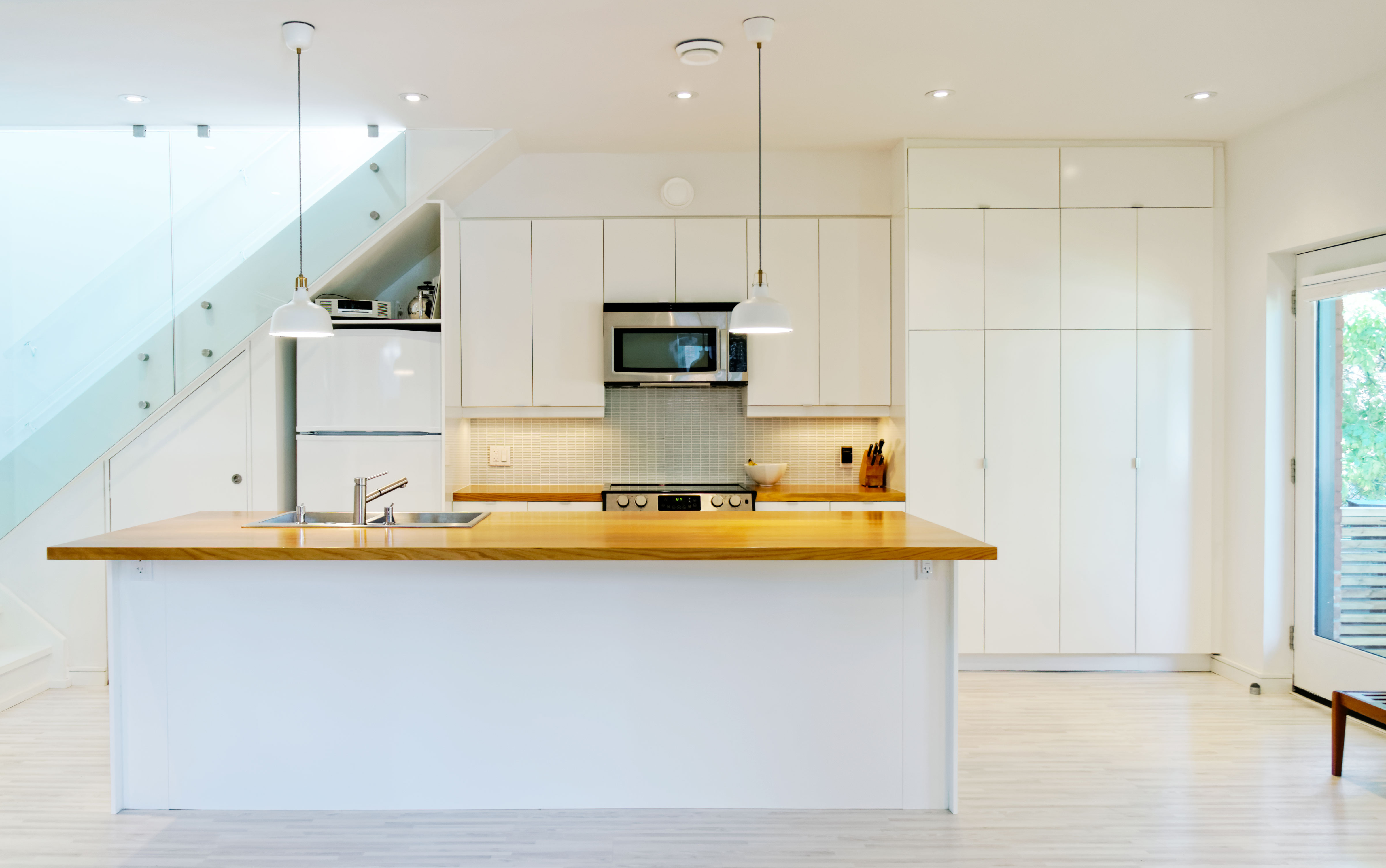
An open-plan concept on the main floor makes the most of the 900-square-foot interior. Photo: Derek Monson
The most significant move, however, was ensuring the house is completely air tight. As Lolley likes to say, you can insulate your house all you like but it won’t be of any value without filling in the cracks: “It’s like wearing a parka and leaving it unzipped.” Once the walls were up, the couple scanned the entire house with an infrared camera to seal every hole they could find. That step led to a significant drop in ACH, from 7.72 to just 2.0. ACH stands for Air Change per Hour and represents how many times outside air finds a way inside and circulates throughout a house each hour. Air leakage is one of the main reasons why most houses remain so reliant on central air heating and cooling systems.
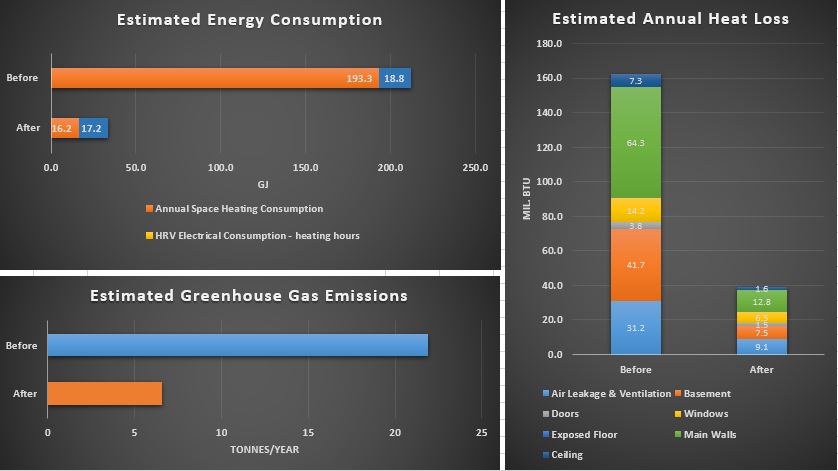
This before and after graphic reveals significant reductions in greenhouse gas emissions and heat loss. Courtesy: Solares Architecture
These relatively straightforward alterations are so wildly effective they seem almost unreal. There are other benefits, too, like fewer technological breakdowns or maintenance needs. And with more insulation, there is less noise. It begs the question: Why aren’t all houses built to similiar standards, especially in a country like Canada, where extreme cold and heat is the norm? People should be lining up, when you consider the average new house being built right now is more than four times less efficient than this house, mostly due to air leaks.
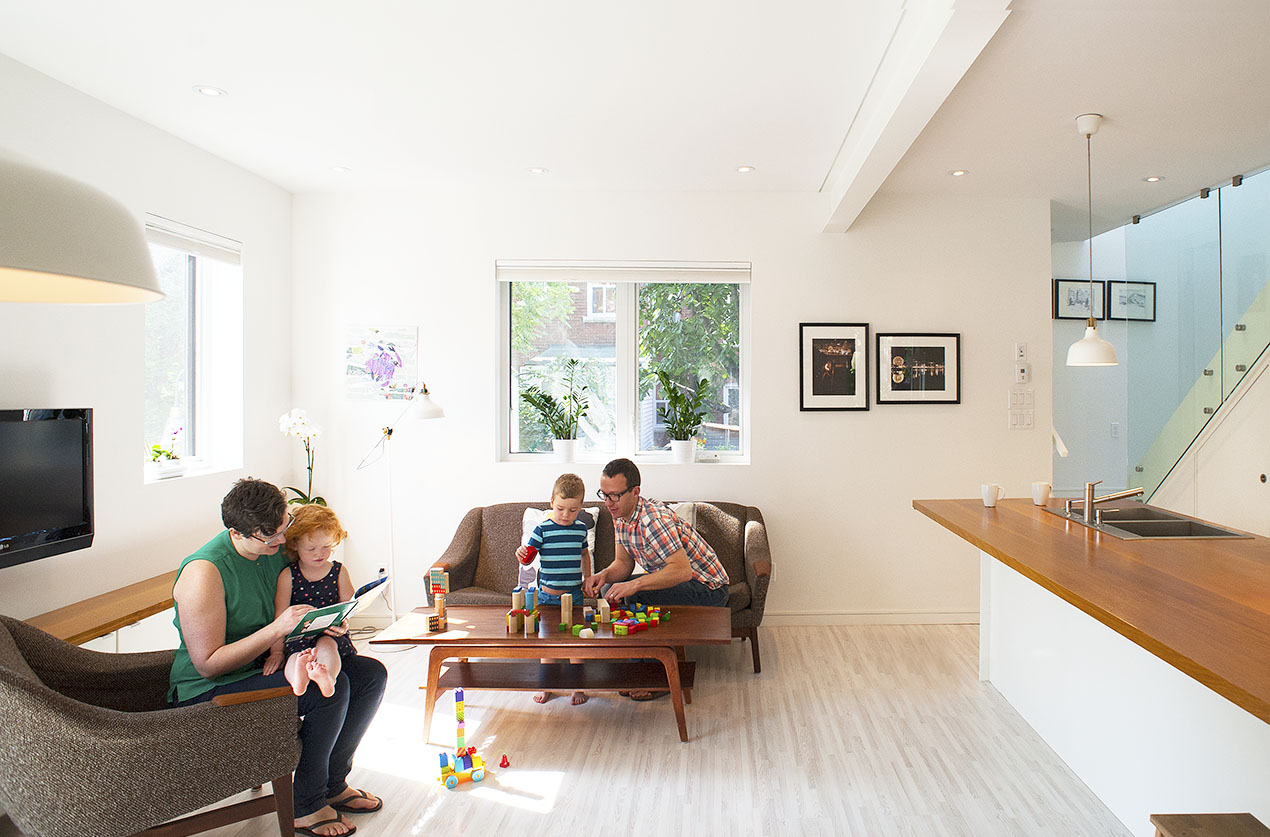
Before the drywall went up, the architects used an infrared camera to ensure every potential air hole was sealed tight.
There are a number of factors why these solutions haven’t reached a critical mass. The first is upfront costs that add up to 15% more in construction (though the return on investment seems self-evident). Another is fossil fuels are relatively cheap right now. Even in the era of climate change, scarcity is what motivates the biggest changes, and gas shortage isn’t something we’re worried about. In fact, the first push for passive design features, like the ones Solares uses, were originally developed in the early 1970s, in direct response to the global oil crisis. Architects and engineers had a significant reason to figure out how to build a less fuel-dependent house. From there, the passive house movement was born.
Another reason is that air tightness and insulation aren’t that interesting. “The investment is in envelope science and you can’t see that,” says Lolley. “People have this Marvel comic book cool factor image about using things like solar and geothermal. They are more attracted to what looks technologically advanced.”
She is not alone in noticing people who invest in clean energy – whether it is in a Prius car or a greener house – want those environmental gestures to be seen and admired. In a recent article on treehugger.com, Lloyd Alter described passive house design as suffering from “inconspicuous consumption” — a twist on the more popular “conspicuous consumption.” Writes Alter: “Imagine saying to your neighbour, ‘Let me describe my air barrier,’ because you can’t even show it, or the insulation. It is all passive stuff that just sits there.”
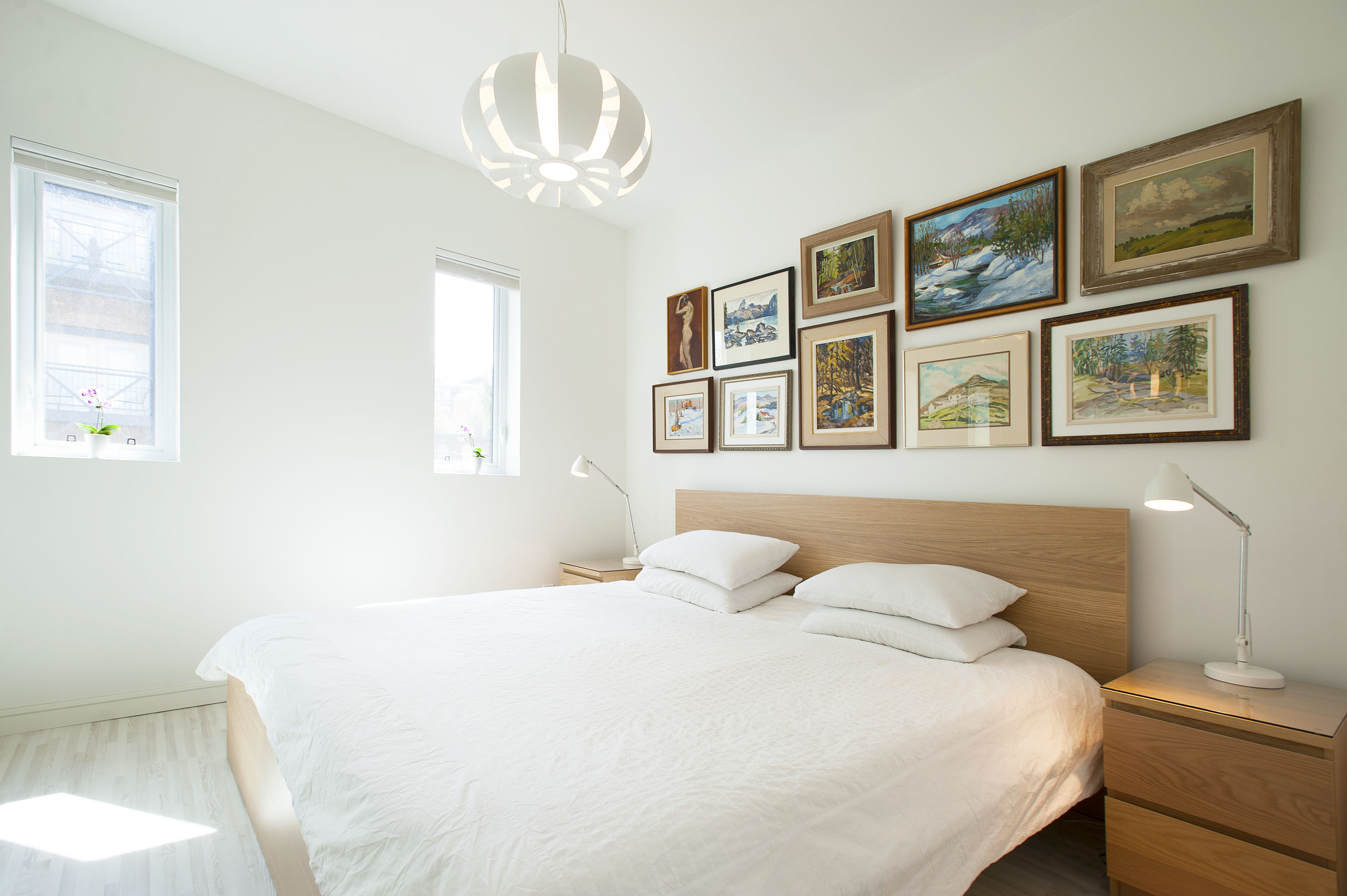
The master bedroom is large enough for a queen-size bed but no additional furniture. Photo: Derek Monson
Anecdotally at least, Lolley has noticed a shift in that attitude. Before COVID, the firm received one or two inquiries a week. It is now fielding at least one a day. “We are finding younger couples are interested in energy-efficient design for various reasons, including a reaction against throwaway culture,” she says. “It’s not about big houses; it’s about good houses. But, then, I’m an internal optimist.”
If Lolley’s optimism is correct and more people are looking to build this way, on a much larger scale, the effect on the environment would be significant. In Canada, approximately 200,000 new houses are built every year. Now, imagine if they were all as super-insulated and air tight? That would be a game-changer.
www.solares.ca
By Catherine Osborne